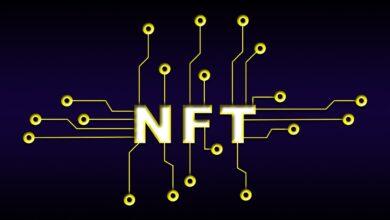Stablecoins – Your Safe Harbor in Market Storms

In the ever-shifting landscape of financial markets, where turbulence reigns and uncertainty looms large, the quest for reliable avenues of investment becomes increasingly pressing. Traditional assets often succumb to the whims of economic fluctuations, leaving investors grappling with the repercussions of volatility. In this context, stablecoins emerge as a compelling alternative–a secure harbor in which to allocate funds during times of market upheaval.
Stablecoins, designed to maintain a consistent value by pegging themselves to stable assets such as fiat currencies or commodities, present a unique opportunity for those seeking refuge from chaotic market conditions. By putting money into these digital currencies, investors can engage in capitalizing on their potential without the inherent risks associated with more volatile cryptocurrencies. This distinctive characteristic provides not only peace of mind but also a strategic advantage in navigating the complexities of modern finance.
The allure of stablecoins lies not just in their capacity to serve as a shelter for investments but also in their functionality within the broader cryptocurrency ecosystem. As traditional banking systems face challenges and regulatory frameworks evolve, many are turning to these digital assets as a viable means of securing their wealth. Thus, allocating funds to stablecoins offers an innovative approach to investing–one that balances the need for security with the desire for growth amid an unpredictable economic climate.
In this article, we will delve deeper into the nuances of stablecoins and explore whether they truly represent a safe haven during turbulent times. We will examine their structure, benefits, and potential pitfalls, providing you with a comprehensive understanding of how to navigate this emerging asset class. Join us as we embark on this analytical journey to uncover the role stablecoins can play in your investment strategy.
Investing in Stablecoins: A Safe Haven Amidst Volatility?
Investing in stablecoins has emerged as a compelling strategy for individuals seeking to navigate the unpredictable waters of cryptocurrency markets. Stablecoins, by their very nature, are designed to maintain a stable value, often pegged to fiat currencies like the US dollar. This characteristic positions them as a reliable shelter during times of market turbulence. When traditional cryptocurrencies experience fluctuations that can lead to significant losses, stablecoins offer a refuge for investors looking to preserve their funds while still participating in the crypto ecosystem.
Capitalizing on the stability of these digital assets, investors can allocate their funds strategically. The ability to convert volatile assets into stablecoins allows one to safeguard investments during uncertain times. For instance, if an investor anticipates a downturn in the market, shifting capital into stablecoins can effectively act as a safe harbor, providing liquidity and stability. This practice is particularly relevant in periods marked by heightened volatility, where the risk of loss is amplified.
Putting money into stablecoins can also facilitate seamless transactions and investments across various platforms. Many decentralized finance (DeFi) applications now support stablecoin transactions, enabling users to earn interest or yield farming opportunities without exposing themselves to the inherent risks associated with other cryptocurrencies. By utilizing stablecoins, investors can engage in these financial activities while enjoying a more secure environment for their capital.
Moreover, allocating funds to stablecoins is not just about preserving value; it is also about enhancing financial flexibility. In times of uncertainty, having part of your portfolio in stablecoins allows for quick re-entry into the market when conditions become favorable. This agility can be crucial for capturing potential gains during market recoveries, effectively turning what could be a setback into an opportunity for growth.
The reliability of stablecoins is further evidenced by their increasing adoption among institutional investors and large corporations. Major companies are beginning to recognize the benefits of using stablecoins for cross-border transactions and treasury management. This trend underscores a growing confidence in these digital assets as a legitimate alternative to traditional banking systems, especially during periods characterized by economic instability.
In conclusion, investing in stablecoins presents an attractive option for those seeking a secure refuge amid market fluctuations. Their inherent stability provides not only peace of mind but also strategic advantages in managing portfolios during turbulent times. As the landscape of cryptocurrency continues to evolve, stablecoins stand out as a beacon of reliability, allowing investors to protect their capital while remaining engaged with the dynamic world of digital finance.
Investing in Stablecoins: A Safe Haven Amidst Volatility?
Stablecoins represent a significant innovation in the realm of digital currencies, designed explicitly to provide stability amidst the inherent fluctuations of traditional cryptocurrencies. By pegging their value to stable assets like fiat currencies or commodities, stablecoins aim to eliminate the extreme volatility that characterizes many cryptocurrencies. This unique quality positions them as a reliable shelter for investors looking to navigate turbulent market conditions. In essence, stablecoins function as a bridge between the crypto world and traditional finance, offering an intriguing alternative for those seeking to allocate their funds with greater security.
Amid market fluctuations, the appeal of stablecoins becomes increasingly evident. Investors often seek refuge during periods of economic uncertainty, and stablecoins provide an avenue for preserving capital while maintaining exposure to the advantages of blockchain technology. By putting money into stablecoins, individuals can mitigate risks associated with price swings typical of other cryptocurrencies. This dynamic aligns well with investment strategies that prioritize capital preservation and risk management, making stablecoins an attractive option for both novice and seasoned investors alike.
Capitalizing on stablecoins during times of uncertainty can take various forms. For instance, investors may use stablecoins as a medium for trading in decentralized finance (DeFi) platforms without exposing themselves to the volatility of other cryptocurrencies. This approach allows them to leverage opportunities in the DeFi ecosystem while ensuring that their core capital remains secure. Furthermore, stablecoins can also facilitate cross-border transactions with lower fees and faster settlement times compared to traditional banking systems, enhancing their utility as a safe harbor during turbulent economic climates.
The decision to allocate funds to stablecoins should be informed by a clear understanding of their mechanics and limitations. While they serve as a secure refuge during times of market turbulence, it is crucial to recognize that not all stablecoins are created equal. The underlying collateralization methods vary significantly among different projects, ranging from fiat-collateralized to algorithmic stablecoins. Therefore, conducting thorough due diligence is essential when selecting which stablecoin to invest in, ensuring that one’s choice aligns with their risk appetite and investment strategy.
Moreover, the regulatory landscape surrounding stablecoins is continually evolving, introducing an additional layer of complexity for investors. As governments and financial institutions grapple with how to classify and regulate these digital assets, potential changes in legislation could impact the stability and usability of certain stablecoins. Staying abreast of these developments is vital for anyone considering putting money into this asset class, as regulatory shifts might influence both market confidence and individual investment outcomes.
In conclusion, investing in stablecoins offers a promising solution for those seeking a secure haven amid the volatility that permeates the cryptocurrency market. By providing a reliable shelter during financial turbulence, these digital assets present opportunities for capital preservation and strategic growth within an increasingly unpredictable economic landscape. However, due diligence remains paramount; understanding the nuances of different stablecoin offerings will ultimately determine whether they serve as a dependable refuge or a precarious gamble in uncertain times.
Exploring the Benefits of Stablecoin Investment
In an era characterized by unprecedented market fluctuations and economic uncertainty, the appeal of stablecoins as a refuge for investors becomes increasingly evident. Stablecoins, which are designed to maintain a stable value relative to a fiat currency or a basket of assets, offer an intriguing alternative for those looking to allocate funds in a more secure manner. By investing in stablecoins, individuals can mitigate the risks associated with more volatile cryptocurrencies while still participating in the digital economy. This unique position serves as a reliable harbor during times of turbulence, allowing investors to preserve capital without completely withdrawing from the burgeoning crypto market.
Putting money into stablecoins provides not only stability but also liquidity. These digital assets often facilitate seamless transactions across various platforms, making them an ideal choice for investors looking to capitalize on opportunities swiftly. For instance, during periods of market instability, converting volatile assets into stablecoins can act as a strategic move, creating a buffer against potential downturns. Moreover, many stablecoins are supported by robust mechanisms that ensure their peg to underlying assets, further enhancing their reliability and attractiveness to cautious investors.
Allocating funds to stablecoins also opens avenues for earning passive income through yield farming and staking. Many decentralized finance (DeFi) platforms allow users to lend their stablecoin holdings in exchange for interest, effectively turning what would be idle funds into productive assets. This dual capability of serving as both a safe haven and a means of generating returns positions stablecoins favorably within an investment portfolio, particularly in uncertain economic climates where traditional savings options may fall short.
Ultimately, the question of whether stablecoins represent a secure refuge amid market fluctuations hinges on their inherent design and operational frameworks. As the cryptocurrency landscape continues to evolve, stablecoins are likely to play a pivotal role in providing stability and assurance for both novice and seasoned investors alike. By embracing this innovative financial instrument, investors can navigate the complexities of modern markets with greater confidence, ensuring that their capital remains secure even amidst the most tumultuous conditions.
Risks and Rewards of Stablecoins: A Comprehensive Analysis
In the ever-evolving landscape of cryptocurrency, stablecoins have emerged as a beacon of hope for investors seeking refuge amid market fluctuations. These digital assets are designed to maintain a stable value by pegging them to traditional currencies or commodities. However, while the notion of stablecoins as a safe haven is appealing, investing in them is not without risks. Factors such as regulatory scrutiny, counterparty risk, and the inherent volatility of underlying assets can pose significant challenges for those allocating their funds to these seemingly reliable shelters.
Capitalizing on stablecoins during times of uncertainty can provide a sense of security for investors. The promise of stability in an otherwise turbulent market is enticing, especially when compared to more volatile cryptocurrencies like Bitcoin or Ethereum. By putting money into stablecoins, investors can effectively sidestep some of the extreme price swings that characterize the crypto market. However, it is essential to recognize that this stability is contingent on various factors, including the soundness of the underlying collateral and the operational integrity of the issuing entity.
A critical aspect of stablecoin investment is understanding how these instruments function within the broader financial ecosystem. Some stablecoins are fully backed by fiat currencies held in reserve, while others may utilize algorithms to manage supply and demand dynamically. This distinction is crucial; for instance, algorithmic stablecoins might face challenges in maintaining their peg during severe market turbulence. Investors must thoroughly assess these mechanisms before deciding to allocate their funds into what they perceive as a secure harbor.
Moreover, while stablecoins can offer a reliable shelter during periods of market instability, they are also susceptible to systemic risks that can jeopardize their perceived safety. Regulatory changes across different jurisdictions could impact the operation and acceptance of stablecoins. Additionally, if confidence in the asset backing a stablecoin deteriorates, it may lead to rapid sell-offs and loss of value–transforming what was once considered a safe haven into an unpredictable asset class.
Investors contemplating putting their money into stablecoins should weigh the potential benefits against these risks carefully. While these digital assets can serve as a tool for liquidity management and hedging against volatility, they are not immune to the broader uncertainties that characterize the financial markets. Diversification remains a prudent strategy; rather than concentrating all capital in stablecoins, investors might consider a balanced approach that includes traditional assets alongside digital ones.
Ultimately, the decision to invest in stablecoins should be informed by a comprehensive understanding of both their strengths and vulnerabilities. As with any investment strategy, due diligence is paramount. By staying informed about market trends and regulatory developments, investors can navigate the complexities surrounding stablecoins and potentially find a secure refuge even amidst turbulence–a testament to human ingenuity in adapting financial tools to meet our needs for stability in uncertain times.
Investing in Stablecoins: A Secure Refuge Amidst Market Turbulence
In the ever-evolving landscape of finance, where uncertainty reigns and market fluctuations can wreak havoc on even the most seasoned investors, stablecoins emerge as a beacon of reliability. The concept of putting money into stablecoins is not merely an act of speculation; rather, it represents a strategic allocation of funds to create a secure haven during times of volatility. As we navigate through these turbulent waters, one must consider the attributes that make stablecoins a compelling choice for capitalizing on opportunities while mitigating risks.
Stablecoins offer a unique blend of stability and liquidity, serving as a reliable shelter amidst the chaos of fluctuating markets. By pegging their value to traditional assets like fiat currencies or commodities, they provide a sense of safety that is often elusive in the world of cryptocurrencies. Investing in stablecoins allows individuals to maintain purchasing power without being subject to the drastic price swings that characterize other digital assets. This characteristic is particularly appealing during periods of economic uncertainty, where securing one’s financial future becomes paramount.
Conclusion: A Safe Harbor for Investors
As we reflect on the potential of stablecoins as a safe harbor in times of uncertainty, it becomes evident that allocating funds to these digital assets can serve as a prudent strategy for both novice and experienced investors alike. The ability to put money into stablecoins not only provides a secure refuge but also facilitates participation in the broader cryptocurrency ecosystem without exposing oneself to undue risk.
- Stable Value: By design, stablecoins mitigate the effects of market turbulence through their pegged values.
- Liquidity: They enable swift transactions, allowing you to capitalize on market movements with ease.
- Diversification: Investing in stablecoins can enhance your portfolio’s resilience against fluctuations in traditional markets.
In conclusion, investing in stablecoins is not simply about seeking shelter from the storm; it is about embracing a new paradigm of financial stability within an otherwise unpredictable environment. By recognizing stablecoins as a reliable means to protect one’s capital while still engaging with the dynamic world of cryptocurrencies, investors can navigate the complexities of modern finance with confidence and poise. Therefore, as you consider your investment strategy amid ongoing uncertainties, remember that stablecoins stand ready to provide both security and opportunity–a true haven within the tumultuous seas of the market.





